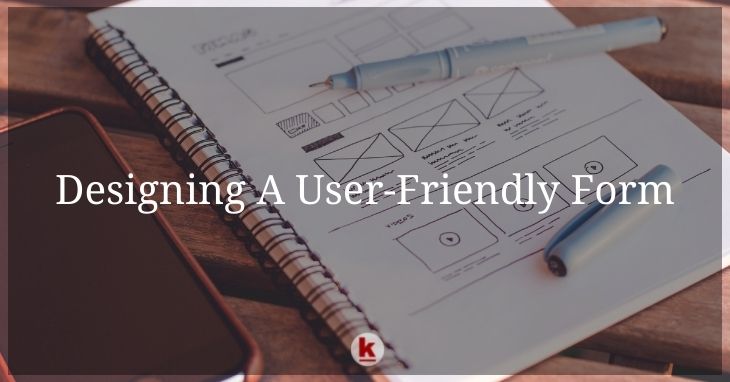
Designing A User-Friendly Form

User friendly forms offer you an easy and secure way to collect data you need in an automated way. With the right web form design, you can easily process fully responsive forms that will collect and store data quickly. Forms are now used everywhere- from subscriptions, registration, feedback, transactions to eventual checkouts. Moreover, 74% of companies use online forms for lead generation, with nearly 49.7% stating their web forms are the highest lead generation conversion tool.
Similar to your favorite website, a multi step form UX design must be easy to use, share correct information a user needs, help them make the right decision, and offer solutions for a particular challenge or concern. Therefore, developers must pay close attention to improving their web form designs.
In this blog, you will gain information on easy-to-follow ways to design a user-friendly form.
1. Order the Form Logically
A form is simply a conversation between two parties- your app and the user. Since it is a two-way communication- it must be logical. You must frame the UX form in a logical way as per the user’s perspective, not the database logic or the app. Order choices are an intuitive course (such as First Name, Last Name, Email, Address, City, and so on). If no order is possible, try to place the questions alphabetically. One of the best form design examples includes omitting unnecessary questions to minimize user effort and increase completion rates.
Moreover, a user may not feel comfortable answering too much personal information and may skip the form. Therefore, avoid asking personal or any sensitive questions in your web form design. However, if you wish to have the user’s personal information, you can make those questions optional, so that the user can leave them if he/she does not feel comfortable.
2. Avoid Duplicate Fields
Many a time, forms ask users to repeat the email or/and password multiple times. This in turn makes the user irritated and he/she may discontinue filling out the form. Previously, twice filling of specific user information was made to minimize typing errors. But now, the user uses the copy and paste option wherever the same information is asked twice. Therefore, it is better to cross-check and make user-friendly forms without repeating fields.
3. Design Single Column Form
A web form design should be simple. ‘Modern-day users are always in a hurry’- considering this statement, you should skip complex, long, and time-consuming forms. A single column presents a one-line perspective: from beginning to the end. A multi-column web form design, in contrast, creates a zig-zag pattern to the user’s eye, and this further increases the filling time.
However, designing a one-column web form does not mean you can put all fields in a single column and make your user scroll the form a lot. Rather, if possible, try to fit some fields together. If still, the form is getting long, you can switch to a multi step form design.
Below are the benefits of multi step form designs:
- Users like doing things step-wise, so a multi-step web form gets immediately simpler to fill.
- The multi-step form is less-pressuring than the lengthy web forms with a variety of questions.
- The user gets motivated as he/she fills out the step-by-step section that gives a progressive effect.
4. Use Less Typing-Based Questions
Users prefer ticking the choices rather than filling in the type boxes. Moreover, typing makes the form filling process slow especially on mobile devices with limited screen space. So, it’s better to design a multi step form UX with easy-to-fill or tick options. If possible, you may use automated and pre-fill features for user data, so that users can easily complete the form without any typing issues.
5. Real-Time Validation
The best way to tell the user that he/she has made an error and needs to correct it is right after they have filled in the information. Moreover, it is important to look for your typing errors too. Real-time validation creates a sense of achievement and offers better user friendly forms. A simple red cross or a blue tick is enough to manifest it.
Real-time validation alerts the user to detect mistakes right away and also offers suggestions to rectify them quickly, without having to wait till the complete filling of the form. Form developers must include validations that show what the user is doing right. Adding real-time validation is one of the best form design examples to build users’ confidence as they go through the form.
Conclusion
While a web form design may not be the most exciting thing, you cannot ignore the fact that they are highly important. So, whenever you are designing a new web form, keep it simple and follow the above-shared tips as common guidelines. Lastly, think from your form users/audience’s point of view and how they will feel while filling it and then design it accordingly.
We can help you with landing pages that win customers & generate leads, learn more.